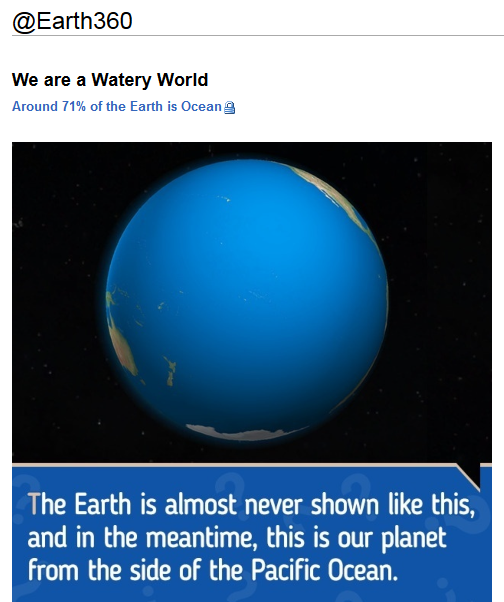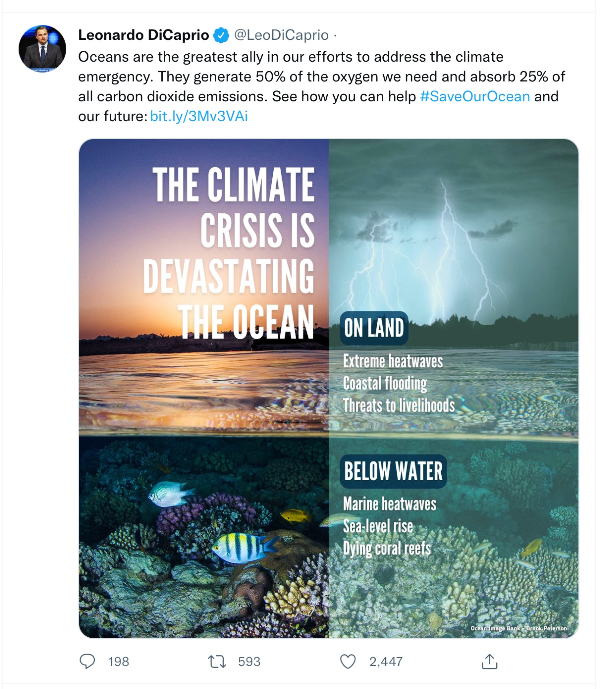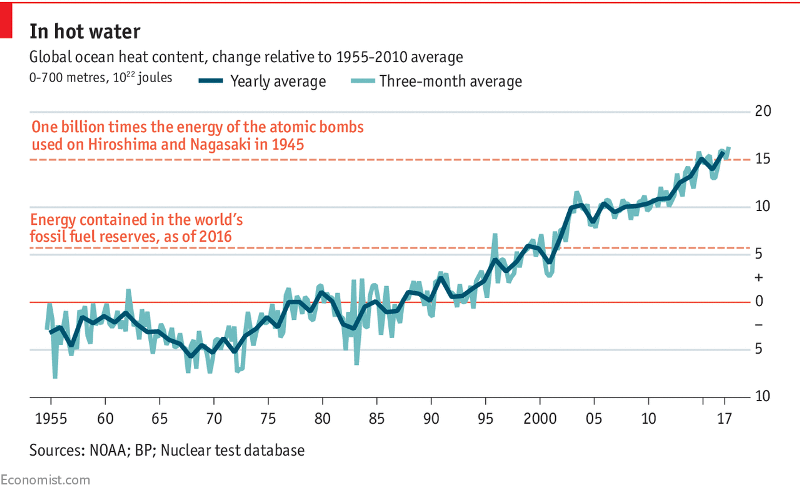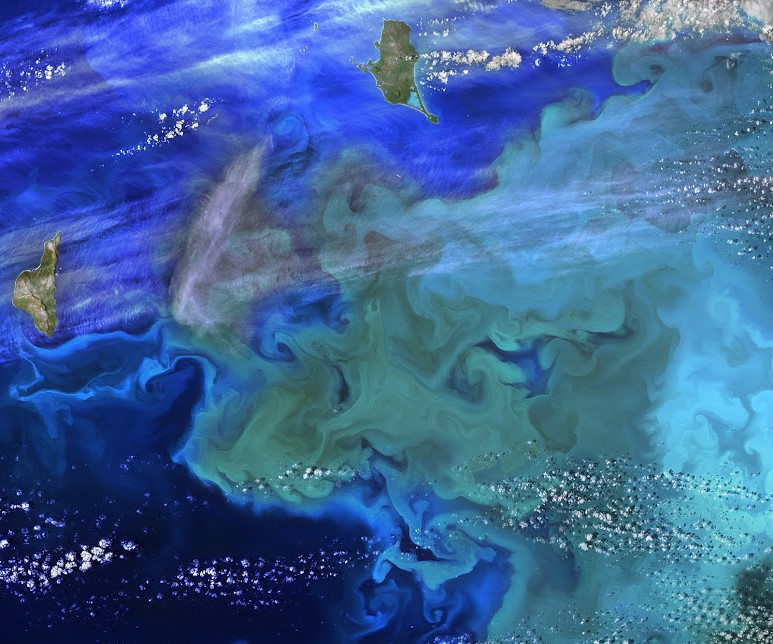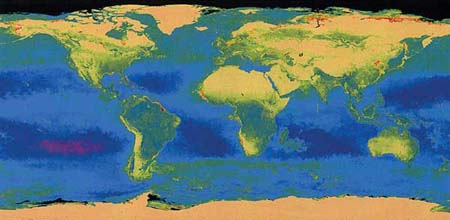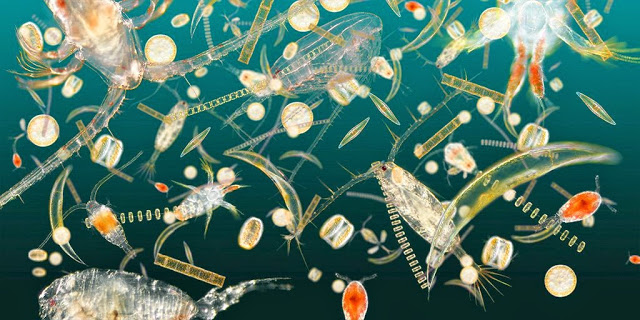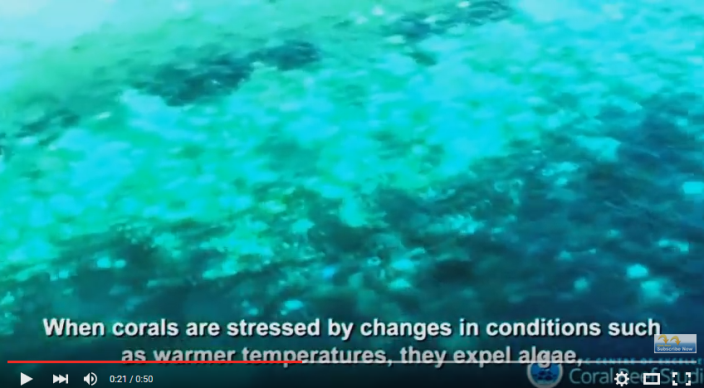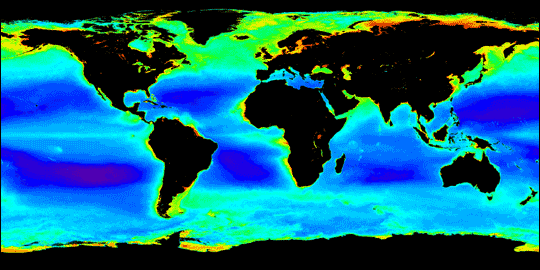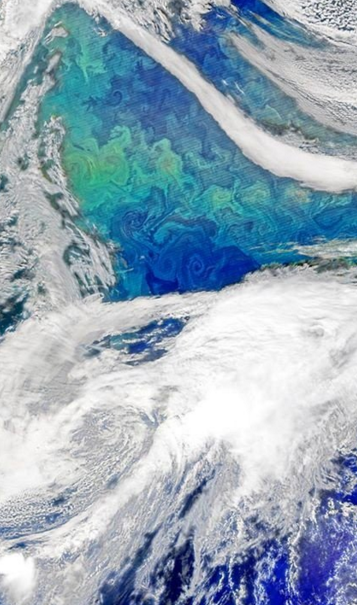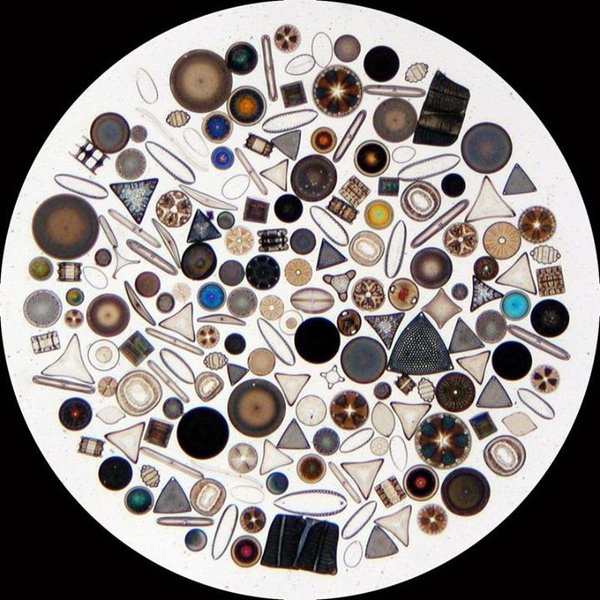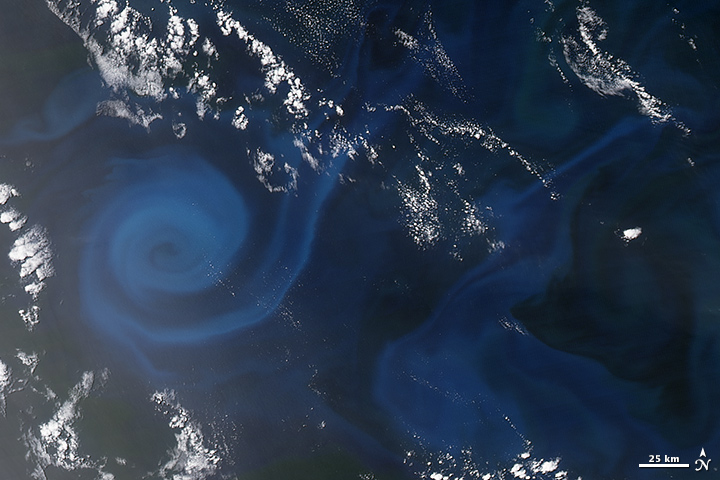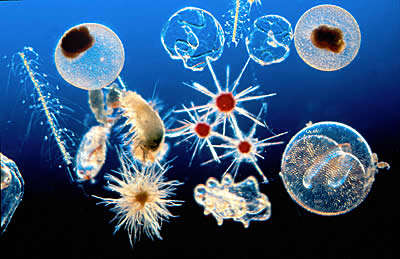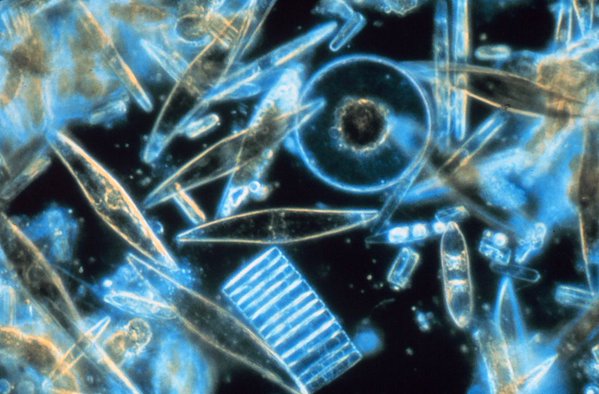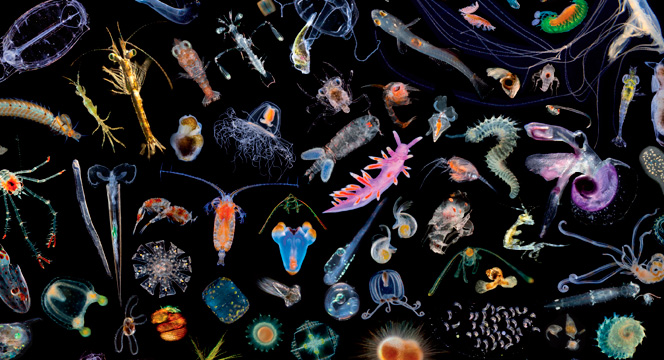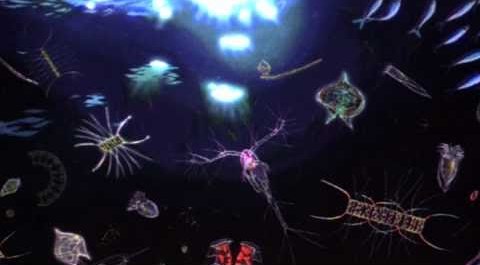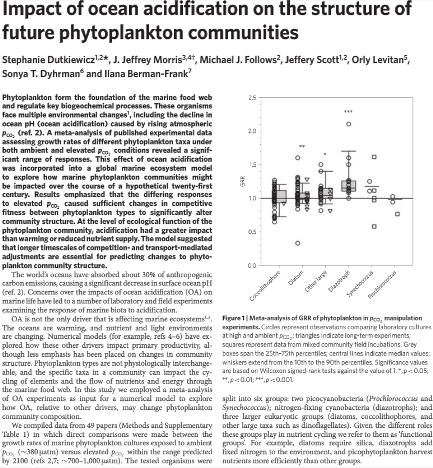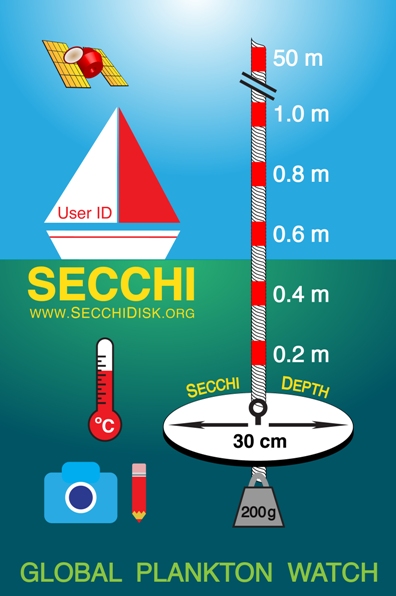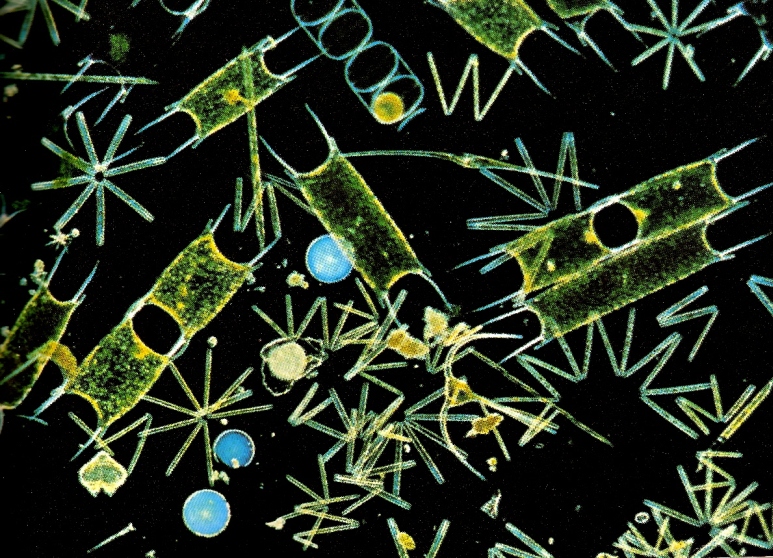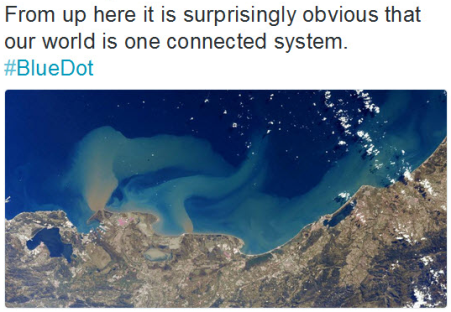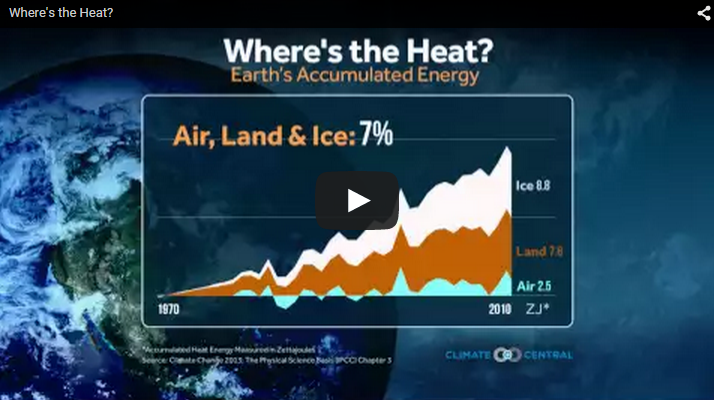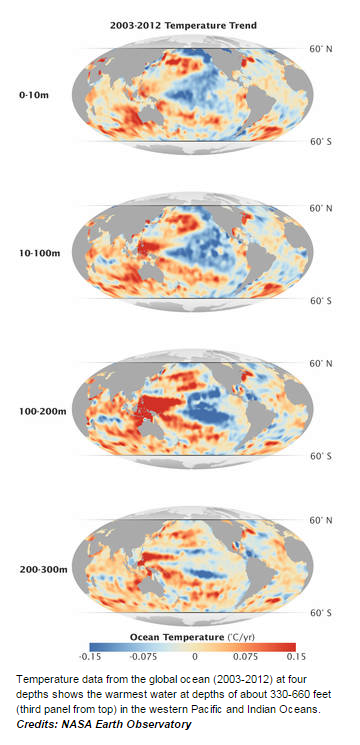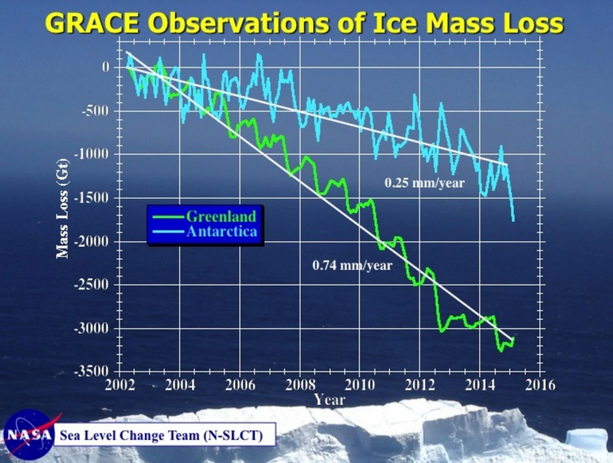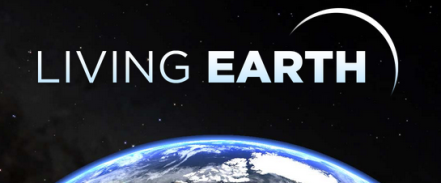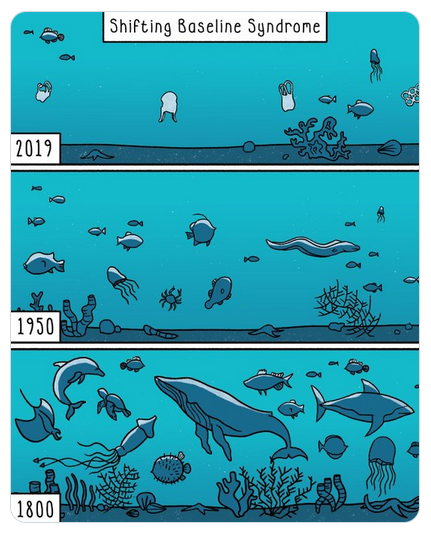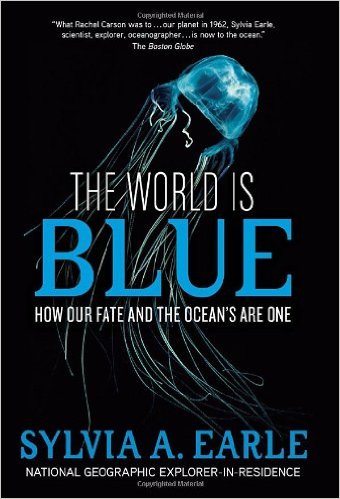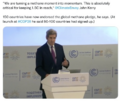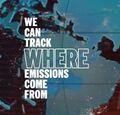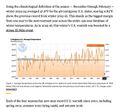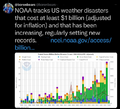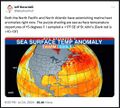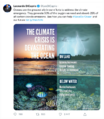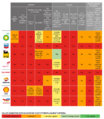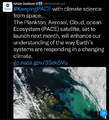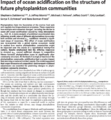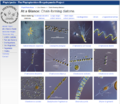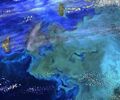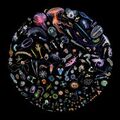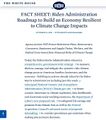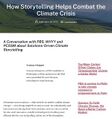Category:Oceans
<addthis />
- Water -- the blue -- is the key to life."
- -- Sylvia A. Earle
- "The World Is Blue: How Our Fate and the the Ocean's Are One"
Nations Agree on Language for Historic Treaty to Protect Ocean Life
The United Nations agreement is a significant step toward protecting biodiversity under growing threat from climate change, overfishing and seabed mining
March 4, 2023
After two decades of planning and talks that culminated in a grueling race over the past few days in New York, a significant majority of nations agreed on language for a historic United Nations treaty that would protect ocean biodiversity.
As marine life faces threats from climate change, overfishing, the possibility of seabed mining and other dangers, the treaty would make it possible to create marine-protected areas and enact other conservation measures on the “high seas,” the immense expanse of ocean covering almost half the world.
“Today the world came together to protect the ocean for the benefit of our children and grandchildren,” said Monica Medina, an assistant secretary of state. “We leave here with the ability to create protected areas in the high seas and achieve the ambitious goal of conserving 30 percent of the ocean by 2030.”
The open oceans of the world have no international body or agreement with a primary focus of protecting marine biodiversity. If enacted, this treaty would change that...
Via ICUN.org
International Union for Conservation of Nature
We congratulate the President of the Intergovernmental Conference on Marine Biodiversity of Areas Beyond National Jurisdiction, the secretariat of the UN, and all the state delegates for their efforts.
“The High Seas Treaty opens the path for humankind to finally provide protection to marine life across vast swathes of the ocean. Its adoption will close a significant gap in international law and offer a framework for governments to work together to protect global ocean heath, climate resilience, and the socioeconomic wellbeing and food security of billions of people. We stand ready to support its implementation,” says IUCN Director General, Dr Bruno Oberle.
Although more ambitious measures will be needed, this legally-binding agreement marks an important step towards protecting the two-thirds of the ocean that lies beyond national jurisdiction.
IUCN particularly applauds the alignment of the Treaty with other international commitments including the Kunming-Montreal Global Biodiversity Framework, and the creation of a special fund to finance the rehabilitation and ecological restoration of marine biodiversity.
IUCN and its Members have been advocating for such an agreement for two decades and have been providing scientific and legal advice to negotiators since the start of the formal negotiations (in 2018), in particular on provisions concerning area-based management tools, especially marine protected areas. Commitments must now be implemented in ways that help address climate change and the many threats to marine ecosystems, and guarantee the critical benefits marine ecosystems provide to people.
IUCN is calling for adoption and ratification to be fast-tracked, to bring the High Seas Treaty into force. The Union is offering its continued support to Parties and stakeholders to lay the foundation for a rapid, effective, and equitable implementation.
More
🌎
United Nations Oceans Conference
5 Actions You can Take to #SaveOurOcean
To mobilize action, the Conference will seek to propel much needed science-based innovative solutions aimed at starting a new chapter of global ocean action.
About the 2022 UN Ocean Conference
The ocean covers 70 percent of the Earth’s surface, is the planet's largest biosphere, and is home to up to 80 percent of all life in the world. It generates 50 percent of the oxygen we need, absorbs 25 percent of all carbon dioxide emissions and captures 90 percent of the additional heat generated from those emissions. It is not just ‘the lungs of the planet’ but also its largest carbon sink - a vital buffer against the impacts of climate change.
It nurtures unimaginable biodiversity and produces food, jobs, mineral and energy resources needed for life on the planet to survive and thrive. There is a great deal we still do not know about the ocean but there are many reasons why we need to manage it sustainably - as set out in the targets of Sustainable Development Goal 14: Life Below Water.
The science is clear – the ocean is facing unprecedented threats as a result of human activities. Its health and ability to sustain life will only get worse as the world population grows and human activities increase. If we want to address some of the most defining issues of our time such as climate change, food insecurity, diseases and pandemics, diminishing biodiversity, economic inequality and even conflicts and strife, we must act now to protect the state of our ocean.
Oceans at Risk
A sobering new international report highlights the critical state of the world's increasingly polluted oceans and the threat that degradation poses to life in the seas and the humans who depend on it.
It's a chilling and exhaustive summation, just published in Annals of Global Health and it begins this way:
The oceans are vast. They cover more than 70% of the earth’s surface, hold 97% of the world’s water, host some of the planet’s most diverse ecosystems, and support economies in countries around the world. Microscopic organisms in the seas are a major source of atmospheric oxygen. By absorbing more than 90% of the excess heat released into the earth’s environment and nearly one-third of carbon dioxide emissions, the oceans slow planetary warming and stabilize the global climate.
The oceans are essential to human health and well-being. They provide food to billions, livelihoods for millions and are the source of multiple essential medicines. They have traditional cultural value and are a source of joy, beauty, peace, and recreation. The oceans are particularly important to the health and well-being of people in small island nations, the high Arctic, and coastal communities, especially those in the Global South. The very survival of these vulnerable populations depends on the health of the seas.
Despite their vast size, the oceans are under threat, and human activity is the main source of the threat. Climate change and other environmental disruptions of human origin have caused sea surface temperatures to rise, glaciers to melt, and harmful algal species and pathogenic bacteria to migrate into waters that were previously uncontaminated. Rising seas and increasingly violent coastal storms endanger the 600 million people worldwide who live within 10 m of sea level. Rising concentrations of atmospheric CO2 have caused acidification of the oceans, which in turn destroys coral reefs, impairs development of oysters and other shellfish, and dissolves calcium-containing microorganisms at the base of the food web. The oceans are losing oxygen. Fish stocks are declining. Dredging, mechanized trawling, oil exploration, and planned deep undersea metal mining threaten the seabeds.
Pollution – unwanted, often hazardous waste material released into the environment by human activity – is one of the existential challenges of the present age. Like climate change, biodiversity loss, and depletion of the world’s fresh water supply, pollution endangers the stability of the earth’s support systems and threatens the continuing survival of human societies.
"Pollution endangers the stability of the earth’s support systems and threatens the continuing survival of human societies"
Oceans in peril, humans at risk; Widespread ocean pollution threatens the health of more than 3 billion people
Ocean pollution is widespread and getting worse, and when toxins in the oceans make landfall they imperil the health and well-being of more than 3 billion people, according to a new report by an international coalition of scientists led by Boston College’s Global Observatory on Pollution on Health and the Centre Scientifique de Monaco.
Atop the proposals to remediate ocean pollution, the researchers recommend: banning coal combustion and the production of single-use plastics, controlling coastal pollution, and expanding marine protected areas.
The study is the first comprehensive examination of the impacts of ocean pollution on human health. It was published in the online edition of the Annals of Global Health and released at the Monaco International Symposium on Human Health & the Ocean in a Changing World.
“Simply put: Ocean pollution is a major global problem, it is growing, and it directly affects human health,” said Professor Philip Landrigan, M.D., the director of the observatory and of BC’s Global Public Health and the Common Good Program. “People have heard about plastic pollution in the oceans, but that is only part of it. Research shows the oceans are being fouled by a complex stew of toxins including mercury, pesticides, industrial chemicals, petroleum wastes, agricultural runoff, and manufactured chemicals embedded in plastic. These toxic materials in the ocean get into people, mainly by eating contaminated seafood."
“We are all at risk, but the people most seriously affected are people in coastal fishing communities, people on small island nations, indigenous populations and people in the high Arctic. The very survival of these vulnerable populations depends on the health of the seas.”
The oceans cover more than 70 percent of the earth’s surface. Despite their vast size, the seas are under threat, primarily as a result of human activity, according to the findings, drawn from 584 scientific reports, which detail:
Pollution of the oceans by plastics, toxic metals, manufactured chemicals, pesticides, sewage, and agricultural runoff is killing and contaminating the fish that feed 3 billion people.
Coastal pollution spreads life-threatening infections. Oil spills and chemical wastes threaten the microorganisms in the seas that provide much of the world’s oxygen supply.
Mobilize global resolve to curb ocean pollution
“The link between ocean pollution and human health has, for a long time, given rise to very few studies,” Prince Albert wrote in an introduction to the report. “Taking into account the effects of ocean pollution – due to plastic, water and industrial waste, chemicals, hydrocarbons, to name a few – on human health should mean that this threat must be permanently included in the international scientific activity.
“This document on Human Health and the Ocean, prepared with the contributions of the Monaco Science Centre and Boston College, substantiates that pollution of the Ocean is not inevitable”...
Among the key findings:
Mercury pollution has become widespread in the oceans, accumulating to high levels in predator fish and once in the food chain poses documented risks to infants, children and adults.
Coal is the major source of mercury pollution, its toxins vaporizing into the air as it burns and eventually washing into the oceans.
Pollution along the coasts by industrial waste, agricultural runoff, pesticides, and human sewage has increased the frequency of Harmful Algal Blooms (HABs) producing toxins associated with dementia, amnesia, neurological damage, and rapid death.
Plastic waste – entering the oceans at a rate of more than 10 million tons each year – kills seabirds and fish and is consumed by humans in the form of toxic microscopic particles, now found in all humans. The waters most seriously impacted by ocean pollution are the Mediterranean Sea, the Baltic Sea, and Asian rivers.
Act Up to Protect the Oceans
"Without the 'blue' there could be no 'green', no life on Earth..."
○ ○ ○ ○ ○ ○ ○ ○ ○ ○ ○ ○ ○ ○ ○ ○ ○ ○ ○ ○ ○ ○
Plastic pollution is suffocating our ocean and the many animals that call it home. Researchers estimate there are now over 5.25 trillion pieces of plastic in the ocean with 8.75 million metric tons being added every year. This pollution is impacting our marine ecosystems and wildlife including seabirds, dolphins, fish, turtles, and whales. Plastic fragments are even displacing plankton as the base of the food chain. So what’s the best way to combat this global epidemic facing our ocean? It’s simple: we need to stop the problem at the source! The Surfrider Foundation’s Ocean Friendly Restaurants program does just that. One restaurant, one customer at a time, it increases awareness, drives behavior change, and ultimately creates scalable impact to reduce our plastic footprint.
Researchers estimate there are now over 5.25 trillion pieces of plastic in the ocean with the number continuing to grow every day.
An estimated 100 billion plastic bags are used ANNUALLY in the United States.
49.4 billion plastic water bottles were sold in one year’s time with only 31.1% recycled, leaving roughly 34 billion plastic bottles that were littered or went into a landfill in 2015.
Restaurants use an average of 5,800 gallons of water per day
Plastic does not biodegrade so virtually every piece of plastic ever created still exists in some form today!
The Ocean Friendly Restaurants program offers restaurants an easy way to show their commitment to making sustainable choices for our ocean.
- ○ ○ ○ ○ ○ ○ ○ ○ ○ ○ ○ ○ ○ ○ ○ ○ ○ ○ ○ ○ ○
- The Fate of the Oceans, the Fate of the Earth / 2020
Ocean temperatures hit record high as rate of heating accelerates
Oceans are clearest measure of climate crisis as they absorb 90% of heat trapped by greenhouse gases
○ ○ ○ ○ ○ ○ ○ ○ ○ ○ ○ ○ ○ ○ ○ ○ ○ ○ ○ ○ ○ ○ ○ ○ ○ ○
The World’s Oceans Are in Danger, Major Climate Change Report Warns
What Price Do We Put on Our Oceans?
193 Nations Convene at the December UN Environment Assembly
“Political resolve is the key for succeeding in the fight against ocean pollution”
Oceans are the new economic frontier
Between 4.8 million tonnes and 12.7 million tonnes of plastic waste enter the ocean every year, 80 percent of it from land sources due to inadequate waste management.
Why are many law-makers still dragging their feet on strong anti-plastic policies?
····················································································
UN Moves to Ban Plastics from Oceans
Plastic in the ocean breaks down into such small segments that pieces of plastic from a one liter bottle could end up on every mile of beach throughout the world.
Billions of pounds of plastic can be found in swirling convergences in the oceans making up about 40 percent of the world's ocean surfaces. 80 percent of pollution enters the ocean from the land.
46 percent of plastics float (EPA 2006) and it can drift for years before eventually concentrating in the ocean gyres.
The Great Pacific Garbage Patch is located in the North Pacific Gyre off the coast of California and is the largest ocean garbage site in the world. This floating mass of plastic is twice the size of Texas, with plastic pieces outnumbering sea life six to one.
Plastic constitutes approximately 90 percent of all trash floating on the ocean's surface, with 46,000 pieces of plastic per square mile.
One million sea birds and 100,000 marine mammals are killed annually from plastic in our oceans. 44 percent of all seabird species, 22 percent of cetaceans, all sea turtle species and a growing list of fish species have been documented with plastic in or around their bodies.
○ ○ ○ ○ ○ ○ ○ ○ ○ ○ ○ ○ ○ ○ ○ ○
Oceans as a Radioactive Waste Dumping Place
Fukushima Disaster
○ ○ ○ ○ ○ ○ ○ ○ ○ ○ ○ ○ ○ ○ ○ ○
The Ocean Food Chain
- Blue-Green Life in the Oceans & Connections to Life on Earth
- "A single kind of blue-green algae in the ocean produces the oxygen in one of every five breaths we take"
- ~ from "The World Is Blue: How Our Fate and the Ocean’s Are One" by Sylvia Earle / National Geographic
Tiny Blue-Green / Plankton, Keywords & Focus Areas
Blue-Green in the Oceans & Connection to Life on Earth
"The Tiny Little Ones"
What's Happening Now in 2016 with the Tiny Blue-Green?
Coral Reef Ecoregions in Oceans of the World Endangered
Australia's Great Barrier Reef and Environment in Grave Danger
Underwater Heat Wave Devastates Great Barrier Reef
Great Barrier Reef bleaching may be "last wake-up call", marine scientists say
@Reddit / The World's Oceans Are in Climate Crisis
Ocean Grass (Plankton) and Ocean Forests (Kelp)
Science is just beginning to study the role of 'the tiny little ones' in the oceans
Phytoplankton/Diatoms/Algae -- Microorganisms of the Oceans
Endangered Tiny-Miniscule Species
CO2 Carbon Pollution and Ocean Ecosystems
GLOBAL PLANKTON WATCH
Marine Biodiversity Strongly Linked to Ocean Temperature
Ocean Temperatures: Are our oceans dying?
Ocean's Oxygen Starts Running Low
Marine food chains at risk of collapse, extensive study of world's oceans finds
○ ○ ○ ○ ○ ○ ○ ○ ○ ○ ○
"The Tiny Little Ones - Plankton"
- "Ecosystems of the Sea"
- Nearly all marine plants are single celled, photosynthetic plankton-algae...
- It is estimated that marine plants produce well over 50% percent of the oxygen in the atmosphere...
○ ○ ○ ○ ○ ○ ○ ○ ○ ○ ○
Ecolivia's "Prochlorococcus" post --
- National Geo for Students: A Message About Saving the 'Tiny Little Ones'
- Students calculate how many breaths we take each day that come from oxygen produced by (tiny blue-green) phytoplankton
- National Geo for Students: A Message About Saving the 'Tiny Little Ones'
Lush tropical rainforests, green prairie pastures and other soil-bound vegetation have long flourished in the ecological limelight. But now the other half of the planet is about to enjoy its day in the sun. Half of the world’s oxygen supply is produced by tiny microbes that live in the sea. And researchers sequencing their genomes have turned up some surprising results... "Photosynthetic organisms in the ocean are as important as photosynthetic organisms on earth... The organisms in the ocean are much less impressive than trees in terms of size, but are extremely important to the biosphere. They produce a significant fraction of the oxygen we breathe, and, fortunately for us, are in less danger than the tropical forests..."
○
Ocean science studies are indicating changes to worldwide phythoplankton populations. The effects of climate change are beginning to be observed by a first-generation of earth/ocean monitoring satellites...
'Measuring and monitoring' blue-green life in the oceans...
Be worried, be very worried
○
What's Happening Now with the Tiny Blue-Green?
Via Blue Planet:What’s happening to the oceans’ phytoplankton?
Enormous Plankton database
"Ocean's hidden world of plankton: A vital, unseen underwater world"
○
Coral Reef Ecoregions in Oceans of the World Endangered
○
Australia's Great Barrier Reef Ecosystem in Grave Danger
Ocean environment is transformed
"Coral Bleaching": Mass expulsion and death
"Reef Systems, Symbiotic Algae"
○ ○ ○ ○ ○ ○ ○ ○ ○ ○ ○ ○ ○ ○ ○ ○ ○ ○
Underwater Heat Wave Devastates Great Barrier Reef
A Nightmare is Unfolding in the Great Barrier Reef
CANBERRA, Australia — An underwater heat wave is devastating huge swaths of Australia’s Great Barrier Reef, marine researchers have found.
Link between fossil fuels and great barrier reef bleaching are incontrovertible
Coral growth being affected by acidifying oceans
○ ○ ○ ○ ○ ○ ○ ○ ○ ○ ○ ○ ○ ○ ○ ○ ○ ○
Great Barrier Reef bleaching may be "last wake-up call", marine scientists say
Extensive bleaching has been caused by higher ocean temperatures...
WaPo: Huge swaths of the Great Barrier Reef seeing severe coral bleaching
○ ○ ○ ○ ○ ○ ○ ○ ○ ○ ○ ○ ○ ○ ○ ○ ○ ○
Australia's Great Barrier Reef hit by severe bleaching - Video
○ ○ ○ ○ ○ ○ ○ ○ ○ ○ ○ ○ ○ ○ ○ ○ ○ ○
Ocean Grass (Plankton) and Ocean Forests (Kelp)
Marine Algae: The Most Important Organism?
It is estimated that marine plants produce more than 50%, up to between 70 and 80 percent of the oxygen in the atmosphere... Nearly all marine plants are single celled, photosynthetic algae... Even marine seaweed is, many times, colonial algae. They are a bunch of single cells trying to look like a big plant ('seaweed' - kelp)... Think about it, 70 percent to 80 percent of all the oxygen we breathe... Why does so much of our oxygen come from algae? First of all, remember that the oceans cover about 71 percent of this planet and land is only about 29 percent... Overall, the production of oxygen in the oceans is at least equal to the production on land
Planet Citizens, Planet Scientists Study Ocean Forests
○ ○ ○ ○ ○ ○ ○ ○ ○ ○ ○ ○ ○ ○ ○
Motion in the Seas (video) by Mares with Phillip Glass music
Science is just beginning to study the role of 'the tiny little ones' in the oceans
Removing Carbon, Adding Oxygen: Plankton's Role is Critically Important
Follow the Tara Expeditions Project
○
Trouble Ahead for Ocean Plankton
Why the plankton, the 'tiny little ones', the food chain, the little fish and up matter
○
'Remember the Name --Prochlorococcus -- Tiny Blue-Green Ones and Oxygen
○
Wikipedia References
-- Phytoplankton obtain energy through the process of photosynthesis and must therefore live in the well-lit surface layer (termed the euphotic zone) of an ocean, sea, lake, or other body of water. Phytoplankton account for half of all photosynthetic activity on Earth.
Phytoplankton are responsible for much of the oxygen present in the Earth’s atmosphere – half of the total amount produced by all plant life.
See Prochlorococcus
Cyanobacteria, also known as Cyanophyta, is a phylum of bacteria that obtain their energy through photosynthesis. The name "cyanobacteria" comes from the color of the bacteria (Greek: κυανός (kyanós) = blue). They are often called blue-green algae...
- Cyanobacteria are arguably the most successful group of microorganisms on earth. They are the most genetically diverse; they occupy a broad range of habitats across all latitudes, widespread in freshwater, marine, and terrestrial ecosystems, and they are found in the most extreme niches such as hot springs, salt works, and hypersaline bays. Photoautotrophic, oxygen-producing cyanobacteria created the conditions in the planet's early atmosphere that directed the evolution of aerobic metabolism and eukaryotic photosynthesis.
Cyanobacteria fulfill vital ecological functions in the world's oceans, being important contributors to global carbon and nitrogen budgets.
See Carbon Sinks
Aquatic cyanobacteria are known for their extensive and highly visible blooms that can form in both freshwater and marine environments. The blooms can have the appearance of blue-green paint...
Cyanobacteria use the energy of sunlight to drive photosynthesis, a process where the energy of light is used to split water molecules into oxygen, protons, and electrons. Because they are aquatic organisms, they typically employ several strategies which are collectively known as a "carbon concentrating mechanism" to aid in the acquisition of inorganic carbon (CO2 or bicarbonate)...
See Diatoms
[Diatoms are] among the most common types of phytoplankton. Diatoms play an important role in biogeochemical earth because they contribute an estimated 75% of primary production in coastal waters... There are more than 200 genera of living diatoms, and it is estimated that there are approximately 100,000 extant species.
○
Sea Drifters (slideshow from BBC - 2010) -- http://news.bbc.co.uk/2/hi/science/nature/8498786.stm
- Close up images of plankton, the tiny creatures that hold the key to survival in the world's oceans
Phytoplankton/Diatoms/Algae -- Microorganisms of the Oceans
Phytoplankton, photosynthesis, carbon cycle, and oxygen in Earth's atmosphere
○ ○ ○ ○ ○ ○ ○ ○ ○ ○ ○ ○ ○ ○ ○ ○ ○
Endangered Tiny-Miniscule Species
GP360: The standard approach, when looking at threatened species, is to focus on well-known larger species. The Red List is widely known for its work to identify species at risk of extinction. Its work forms the basis for many biodiversity preservation efforts. The focus on [https://en.wikipedia.org/wiki/The_world's_100_most_threatened_species larger, readily identified animals is the norm and these species, often mammals, provides just a part of the larger picture of our threatened environment.
Large 'charismatic', or 'iconic' species, most often eclipse recognition of rarely considered species that are not even 'known' or known to be in danger...
The reality is that much of the extinction in our era is of the small species, the lesser known, unknown and unconsidered species, whether in the rich biospheres of the rainforest or the oceans, the micro-organisms are at risk and in peril of collapse.
When we speak of Plankton, as a profoundly critical keystone species, the food chain of the oceans begins with plankton, yet the disruption of the atmosphere and the heating of the ocean, or acidification, will have great consequences to the Phytoplankon, flagellates who cannot move with their limited locomotion system... Acidification of the oceans and the increases of heat or strengthened suns rays due to changes in atmospheric conditions and UV radiation can have deadly consequences to the 'least of and smallest of' the species -- and as a result effect the larger systems in ways that science is only now beginning to measure and monitor.
We are, our species is, beginning to understand that as the small animals comprising the foundations of the 'food chain' and biosphere systems are disrupted, endangered and/or destroyed, the rest of the food chain and integral ecological connections between species will be disrupted, endangered, and/or destroyed.
The understanding of and protection of biodiversity, large and small, easily recognized and difficult to recognize, is a great challenge of the era in which we live... loss of biodiversity is producing a 'ripple effect' over time, a threat multiplier that demands strategic environmental security as a key goal, a green policy objective beginning with awareness and policies and practices of sustainability.
○
Phytoplankton obtain energy through the process of photosynthesis and must live in the well-lit surface layer (termed the euphotic zone) of an ocean, sea, lake, or other water.
Phytoplankton account for half of all photosynthetic activity on Earth...
Phytoplankton are responsible for much of the oxygen present in the Earth’s atmosphere – half of the total amount produced by all plant life.
Marine Biodiversity Strongly Linked to Ocean Temperature
ScienceDaily / 2010 — In an unprecedented effort published online by the international journal Nature, a team of scientists mapped and analyzed global biodiversity patterns for over 11,000 marine species ranging from tiny plankton to sharks and whales.
The researchers found striking similarities among the distribution patterns, with temperature strongly linked to biodiversity for all thirteen groups studied. These results imply that future changes in ocean temperature, such as those due to climate change, may greatly affect the distribution of life in the sea.
○
CO2 Carbon Pollution and Ocean Ecosystems
Big Trouble Ahead for Ocean Plankton
Sobering news: Ocean acidification will likely kill off some phytoplankton species and let others thrive, while warming waters will likely cause mass phytoplankton migrations toward the poles. In short: The base of the marine food web could be in for some serious upheaval in the coming decades. Here’s more from MIT News:
“I’ve always been a total believer in climate change, and I try not to be an alarmist, because it’s not good for anyone,” says (Dr. Stephanie) Dutkiewicz, who is the paper’s lead author. “But I was actually quite shocked by the results. The fact that there are so many different possible changes, that different phytoplankton respond differently, means there might be some quite traumatic changes in the communities over the course of the 21st century. A whole rearrangement of the communities means something to both the food web further up, but also for things like cycling of carbon.”
Dutkiewicz and her colleagues studied 154 published experiments...
GLOBAL PLANKTON WATCH
THE GLOBAL SEAFARER STUDY OF THE MARINE PHYTOPLANKTON
ABOUT THE PROJECT
The phytoplankton in the sea account for approximately 50% of all photosynthesis on Earth and, through the food web they support, they underpin the marine food chain.
Living at the surface of the sea the phytoplankton are particularly sensitive to changes in sea surface temperature.
We need to know much more about these changes and you can help by making a simple piece of scientific equipment called a Secchi Disk and using the free Secchi App.
Full instructions for the project are included in the free Secchi App.
Press Release -- Scientists fear the population of the microscopic beings is in decline due to rising sea temperatures and, if true, that could have consequences for every aspect of marine life.
Plankton biologist Dr Richard Kirby, who is leading the study, said: "As the phytoplankton live at the surface of the sea they are being affected by rising sea temperatures due to climate change. A scientific paper published in 2010 suggested the ocean's plankton population had declined by as much as 40 per cent since 1950. Like all marine creatures, phytoplankton have a preferred optimum sea temperature no matter where they are in the world and we need to know more about how they are changing in order to understand the effects on the ocean's biology.” To check the levels of phytoplankton in our oceans, marine experts have developed a free smart phone app for sailors and fishermen to use wherever they are in the world.
Dr Kirby added: "The Secchi Disks are still used by marine scientists to study phytoplankton but there are too few scientists to survey the world's oceans as well as we would wish. This app enables seafarers around the world to take part in a science project and if we can just get a small percentage of the global population of sailors involved, we can generate a database that will help us understand how life in the oceans is changing. It would help us learn much more about these important organisms at a crucial time when their habitat is altering due to climate change."
The Secchi app has been developed by Dr Nicholas Outram and Dr Nigel Barlow, from Plymouth University’s School of Computing and Mathematics, and the database will be maintained by Pixalytics Ltd.
○
Phytoplankton obtain energy through the process of photosynthesis and must therefore live in the well-lit surface layer (termed the euphotic zone) of an ocean, sea, lake, or other body of water. Phytoplankton account for half of all photosynthetic activity on Earth. Thus phytoplankton are responsible for much of the oxygen present in the Earth’s atmosphere – half of the total amount produced by all plant life. (Wikipedia)
○
Marine Biodiversity Strongly Linked to Ocean Temperature
Ocean Temperatures: Are our oceans dying?
"Phytoplankton have declined 40% in 60 years as figures reveal Earth has been getting hotter since the Eighties and much of the heat has been absorbed by oceans...
Microscopic marine algae form the basis of the ocean food chain are dying at a "terrifying rate"...
Phytoplankton, described as the 'fuel' on which marine ecosystems run, are experiencing declines of about 1 per cent of the average total a year...
According to researchers, a 40 per cent drop in phytoplankton since 1950...
Marine diatom cells (Rhizosolenia setigera), an important group of phytoplankton in the oceans are now in massive decline...
The reduction in the amount of algae in the pceams could have an impact on a wide range of species, from tiny zooplankton to marine mammals, seabirds, fish and humans...
The decline of the phytoplankton would be a more dramatic change than the loss of the tropical rainforests, scientist say...
The research, published in the journal Nature, says plankton declines are linked to rising sea-surface temperatures and changes in the conditions of the ocean, particularly close to the equator...
Most of the declines are seen in tropical regions, polar and in the open ocean, where most phytoplankton are produced...
○ ○ ○ ○ ○ ○ ○ ○ ○ ○ ○ ○ ○ ○ ○ ○ ○ ○ ○ ○
Ocean's Oxygen Starts Running Low
Via Grist (2016): Oceans in crisis in as little as 15 years
Ocean Scientists for Informed Policy: Ocean Deoxygenation
Via AGU / Global Biogeochemical cycles: Finding forced trends in oceanic oxygen
"A major threat to marine life," says NCAR scientist Matthew Long...
Loss of Ocean Oxygen, A 'Forced Trend'
○ ○ ○ ○ ○ ○ ○ ○ ○ ○ ○ ○ ○ ○ ○ ○ ○ ○
Marine food chains at risk of collapse, extensive study of world's oceans finds
Important ecosystems could be massively damaged by 2050 unless greenhouse gas emissions and localised pollution is drastically reduced, researchers say...
The food chains of the world’s oceans are at risk of collapse due to the release of greenhouse gases, overfishing and localised pollution, a stark new analysis shows.
A study of 632 published experiments of the world’s oceans, from tropical to arctic waters, spanning coral reefs and the open seas, found that climate change is whittling away the diversity and abundance of marine species.
The paper, published in the Proceedings of the National Academy of Sciences, found there was “limited scope” for animals to deal with warming waters and acidification, with very few species escaping the negative impact of increasing carbon dioxide dissolution in the oceans.
Published by Nature Climate Change:
- Re-evaluating ocean warming impacts on global phytoplankton
○ ○ ○ ○ ○ ○ ○ ○ ○ ○ ○ ○ ○ ○ ○ ○ ○ ○
NASA Earth Observatory
Phytoplankton Oxygen Factories
Phytoplankton are the grass of the sea. They are floating, drifting, plant-like organisms that harness the energy of the Sun, mix it with carbon dioxide that they take from the atmosphere, and turn it into carbohydrates and oxygen.
Phytoplankton are critical to the marine food web, being the primary producers of food for the oceanic food web, from zooplankton to fish and shellfish to whales.
Like plants and trees on land, phytoplankton give us a lot more than food. It is estimated that 50 to 80 percent of the oxygen in our atmosphere has been produced by phytoplankton. At the same time, they are responsible for drawing down significant portions of the carbon dioxide from the air. The tiniest of living organisms exert an outsized influence on the planet.
○
Earth Science Research from Space
https://eoimages.gsfc.nasa.gov/images/imagerecords/87000/87465/sepacific_vir_2016013.jpg
○ ○ ○ ○ ○ ○ ○ ○
August 2015/NASA: "What's up with sea-level rise?"
Data from NASA coming i/o from JPL US/Euro mission control
https://www.nasa.gov/goddard/risingseas --- https://svs.gsfc.nasa.gov/cgi-bin/details.cgi?aid=11978 --- https://sealevel.jpl.nasa.gov/ --- http://www.washingtonpost.com/news/energy-environment/wp/2015/08/26/the-troubling-reasons-why-nasa-is-so-focused-on-studying-on-sea-level-rise/ --- https://en.wikipedia.org/wiki/Ocean_Surface_Topography_Mission
Why NASA’s so worried that Greenland’s melting could speed up
○ ○ ○ ○ ○ ○ ○ ○ ○ ○ ○ ○ ○ ○ ○ ○ ○ ○ ○ ○ ○ ○
Global trends show seabird populations dropped 70 per cent since 1950s
“Seabirds are particularly good indicators of the health of marine ecosystems,” said Paleczny. ”When we see this magnitude of seabird decline, we can see there is something wrong with marine ecosystems. It gives us an idea of the overall impact we’re having.”
The dramatic decline is caused by a variety of factors including overfishing of the fish seabirds rely on for food, birds getting tangled in fishing gear, plastic and oil pollution, introduction of non-native predators to seabird colonies, destruction and changes to seabird habitat, and environmental and ecological changes caused by climate change.
Seabirds tend to travel the world’s oceans foraging for food over their long lifetimes, and return to the same colonies to breed. Colony population numbers provide information to scientists about the health of the oceans the birds call home.
The Sea Around Us Project
Where Is the Heat Going?
Here's where over 90% of the extra heat from global warming is going and the billions of dollars it's costing us
Via Business Insider / August 2015
___________________________________
Contrasting futures for ocean and society from different anthropogenic CO2 emissions scenarios
Via Science / July 2015
Although the ocean moderates anthropogenic climate change, this has great impacts on its fundamental physics and chemistry, with important consequences for ecosystems and people. Despite the ocean’s critical role in regulating climate—and providing food security and livelihoods for millions of people—international climate negotiations have only minimally considered impacts on the ocean. Here, we evaluate changes to the ocean and its ecosystems, as well as to the goods and services they provide, under two contrasting CO2 scenarios: the current high-emissions trajectory (Representative Concentration Pathway 8.5, RCP8.5) and a stringent emissions scenario (RCP2.6) consistent with the Copenhagen Accord of keeping mean global temperature increase below 2°C in the 21st century. To do this, we draw on the consensus science in the latest assessment report of the Intergovernmental Panel on Climate Change and papers published since the assessment.
Warming and acidification of surface ocean waters will increase proportionately with cumulative CO2 emissions (see figure). Warm-water corals have already been affected, as have mid-latitude seagrass, high-latitude pteropods and krill, mid-latitude bivalves, and fin fishes. Even under the stringent emissions scenario (RCP2.6), warm-water corals and mid-latitude bivalves will be at high risk by 2100. Under our current rate of emissions, most marine organisms evaluated will have very high risk of impacts by 2100 and many by 2050. These results—derived from experiments, field observations, and modeling—are consistent with evidence from high-CO2 periods in the paleorecord.
Impacts to the ocean’s ecosystem services follow a parallel trajectory. Services such as coastal protection and capture fisheries are already affected by ocean warming and acidification. The risks of impacts to these services increase with continued emissions: They are predicted to remain moderate for the next 85 years for most services under stringent emission reductions, but the business-as-usual scenario (RCP8.5) would put all ecosystem services we considered at high or very high risk over the same time frame. These impacts will be cumulative or synergistic with other human impacts, such as overexploitation of living resources, habitat destruction, and pollution. Fin fisheries at low latitudes, which are a key source of protein and income for millions of people, will be at high risk.
Four key messages emerge. First, the ocean strongly influences the climate system and provides important services to humans. Second, impacts on key marine and coastal organisms, ecosystems, and services are already detectable, and several will face high risk of impacts well before 2100, even under the low-emissions scenario (RCP2.6). These impacts will occur across all latitudes, making this a global concern beyond the north/south divide. Third, immediate and substantial reduction of CO2 emissions is required to prevent the massive and mostly irreversible impacts on ocean ecosystems and their services that are projected with emissions greater than those in RCP2.6. Limiting emissions to this level is necessary to meet stated objectives of the United Nations Framework Convention on Climate Change; a substantially different ocean would result from any less-stringent emissions scenario. Fourth, as atmospheric CO2 increases, protection, adaptation, and repair options for the ocean become fewer and less effective.
Ocean acidification and warming provide immediate and compelling arguments for rapid reductions in CO2 emissions and atmospheric CO2 drawdown
July 2015
NASA Study Finds Indian, Pacific Oceans Temporarily Hide Global Warming
-- The new study used ocean temperature measurements from a global array of 3,500 Argo floats and other ocean sensors.
-- Temperature data from the global ocean (2003-2012) at four depths
-- Via NASA Earth Observatory http://www.nasa.gov/earth
A new NASA study of ocean temperature measurements shows in recent years extra heat from greenhouse gases has been trapped in the waters of the Pacific and Indian oceans. Researchers say this shifting pattern of ocean heat accounts for the slowdown in the global surface temperature trend observed during the past decade.
Researchers from NASA’s Jet Propulsion Laboratory (JPL), Pasadena, California, found a specific layer of the Indian and Pacific oceans between 300 and 1,000 feet (100 and 300 meters) below the surface has been accumulating more heat than previously recognized. They also found the movement of warm water has affected surface temperatures. The result was published Thursday in the journal Science...
In the study, researchers analyzed direct ocean temperature measurements, including observations from a global network of about 3,500 ocean temperature probes known as the Argo array. These measurements show temperatures below the surface have been increasing.
The Pacific Ocean is the primary source of the subsurface warm water found in the study, though some of that water now has been pushed to the Indian Ocean. Since 2003, unusually strong trade winds and other climatic features have been piling up warm water in the upper 1,000 feet of the western Pacific, pinning it against Asia and Australia.
"The western Pacific got so warm that some of the warm water is leaking into the Indian Ocean through the Indonesian archipelago," said the lead author of the study.
The movement of the warm Pacific water westward pulled heat away from the surface waters of the central and eastern Pacific, which resulted in unusually cool surface temperatures during the last decade. Because the air temperature over the ocean is closely related to the ocean temperature, this provides a plausible explanation for the global cooling trend in surface temperature.
Cooler surface temperatures also are related to a long-lived climatic pattern called the Pacific Decadal Oscillation, which moves in a 20 to 30 year cycle. It has been in a cool phase during the entire time surface temperatures showed cooling, bringing cooler-than-normal water to the eastern Pacific and warmer water to the western side. There currently are signs the pattern may be changing to the opposite phase, with observations showing warmer-than-usual water in the eastern Pacific.
"Ocean heating in the Pacific will definitely drive a major surge in global surface warming"
Previous attempts to explain the global surface temperature cooling trend have relied more heavily on climate model results or a combination of modeling and observations, which may be better at simulating long-term impacts over many decades and centuries. This study relied on observations, which are better for showing shorter-term changes over 10 to 20 years. In shorter time spans, natural variations such as the recent slowdown in global surface temperature trends can have larger regional impacts on climate than human-caused warming.
__________________
Sea-level Rise
○ ○ ○ ○ ○ ○ ○ ○ ○ ○ ○ ○ ○ ○ ○ ○ ○ ○ ○ ○ ○ ○
The ocean and the atmosphere exchange massive amounts of CO2
An anthropogenic flux has been superimposed on the natural flux
○ ○ ○ ○
The Darkening Sea by Elizabeth Kolbert
○ ○ ○ ○
Challenge: To Preserve and Protect Life on Planet Earth
○ ○ ○ ○
The World Is Blue
How many ocean species are there?
Not only do we not know, but the answer may be unknowable for the foreseeable future, given the size of the challenge, especially at the microbial level. Even with the ambitious effort of the Census of Marine Life and the combined institutional efforts of various navies, oceanographic research institutions, and individuals, currently less than 5 percent of the ocean has been seen, let along explored; for the deep sea, below 305 meters (1,000 feet), the figure drops to about one percent.
The magnitude of what remains to be discovered is exemplified by the discoveries of Richard Pyle, a truly intrepid biologist who uses cutting-edge re-breather diving systems and special mixes of gases to explore the almost-light/almost-dark region of the sea known as the twilight zone, from 100 to 200 meters (330 to 660 feet) down. He finds new species of fish at the rate of 12 to 13 (and sometimes as many as 30) per hour. For invertebrates, the number is at least ten times that.
Given the number of new forms of life discovered in regions examined for the first time, it is now estimated that the ocean holds at least ten million species. Some believe the number may be closer to a hundred million--not counting the microbes that eclipse all other forms of life in terms of numbers and sheer mass.
○
The Oceans, the Commons
Protect, Don't Pollute It, Don't Devastate It, Sustain It
Satellites to Measure, Monitor & Manage
Global Fishing Watch / Project Launch / November 2014
With the leadership of Google Earth Outreach and Rebecca Moore...
Observing the world's fishing fleet, real time and over time
Game-changer Technology
Automatic identification systems, AIS signals, carry information about fishing vessels, e.g., name, country of origin, speed and position.
Today, except for illegals and pirates, the sector has reached a point where there is a comprehensive picture of where vessels are and where they’ve been, at any given time, encapsulated in billions of individual AIS signals.
At the same time, advances in machine learning and artificial intelligence are making it possible to see patterns in this glut of data.
A collaboration between environmental watchdog SkyTruth, Global Fishing Watch and Google, has been instrumental in laying the groundwork for AIS data analysis. The group has created algorithms that can be applied to large amounts of data to show the type of fishing activity, location or travel path of vessels, and made some of this data accessible in the form of an interactive map...
This complex supply chain can be documented and recorded electronically at sea and in port.
This type of measuring and monitoring work can bring reform to the fishing industry and help curb over fishing, resource depletion, and fraud, which is prevalent with seafood everywhere in the world.
High seas ocean fishery resources do not belong to a single nation, but rather are viewed as an international commons, a vital resource that is to be shared.
Knowing more about global fishing patterns can help inform policymakers and consumers... research is just getting started in this field.
“AIS tracking is going to increase and become more elaborate.”
- Time to Act for Sustainability: Oceans 360°
Sustainable Fishing Policies Are Possible
- https://en.wikipedia.org/wiki/Shifting_baseline -- "Shifting Baselines"
From the Project Announcement:
Global Fishing Watch is the product of a technology partnership between SkyTruth, Oceana, and Google Earth Outreach that is designed to show all of the trackable fishing activity in the ocean.
This interactive web tool – currently in prototype stage – is being built to enable anyone to visualize the global fishing fleet in space and time. Global Fishing Watch will reveal the intensity of fishing effort around the world, one of the stressors contributing to the precipitous decline of our fisheries.
With hundreds of millions of people around the world depending on our ocean for their livelihoods, and many more relying on the ocean for food, ensuring the long-term sustainability of our ocean is a critical global priority. We need a tool that harnesses the power of citizen engagement to hold our leaders accountable for maintaining an abundant ocean.
Global Fishing Watch will be available to the public, enabling anyone with an internet connection to monitor when and where commercial fishing is happening around the globe.
Citizens can use the tool to see for themselves whether their fisheries are being effectively managed. Seafood suppliers can keep tabs on the boats they buy fish from. Media and the public can act as watchdogs to improve the sustainable management of global fisheries. Fisherman can show that they are obeying the law and doing their part. Researchers will have access to a multi-year record of all trackable fishing activity.
The tool uses a global feed of vessel locations extracted from Automatic Identification System (AIS) tracking data collected by satellite, revealing the movement of vessels over time. The system automatically classifies the observed patterns of movement as either “fishing” or “non-fishing” activity.
This version of the Global Fishing Watch started with 3.7 billion data points, more than a terabyte of data from two years of satellite collection, covering the movements of 111,374 vessels during 2012 and 2013. We ran a behavioral classification model that we developed across this data set to identify when and where fishing behavior occurred. The prototype visualization contains 300 million AIS data points covering over 25,000 unique vessels. For the initial fishing activity map, the data is limited to 35 million detections from 3,125 vessels that we were able to independently verify were fishing vessels. Global Fishing Watch then displays fishing effort in terms of the number of hours each vessel spent engaged in fishing behavior, and puts it all on a map that anyone with a web browser will be able to explore.
○
Subcategories
This category has the following 18 subcategories, out of 18 total.
A
B
E
F
G
O
P
S
T
Pages in category "Oceans"
The following 90 pages are in this category, out of 90 total.
C
E
- Earth and Space, Politics
- Earth from NASA
- Earth Imaging-New Space
- Earth Right Now
- Earth Science
- Earth Science Research from Space
- Earth Science Vital Signs
- Ecolivia
- Environmental agreements
- Environmental Law, Rollbacks under Trump 2016-20
- Environmental Laws and Modern Environmental Movement
- Environmental movement
- Environmental protection
- ESA Living Planet Announcement - May 2022
- European Union Green Deal - Fit for 55
- Extinction
G
- George E. Brown Jr
- Glasgow Climate Summit - Pledges, Promises, Declarations - What's Next Up
- Global Fishing Watch
- Google Earth
- Google Earth Timelapse
- GP360 NewPages
- Green Politics 360
- Green Stories of the Day
- Green Stories of the Day - GreenPolicy360 Archive
- GreenPolicy360 Archive Highlights 2013
- GreenPolicy360 Archive Highlights 2014
- GreenPolicy360 Archive Highlights 2015
- GreenPolicy360 Archive Highlights 2016
- GreenPolicy360 Archive Highlights 2017
- GreenPolicy360 Archive Highlights 2018
- GreenPolicy360 Archive Highlights 2019
- GreenPolicy360 Archive Highlights 2020
- GreenPolicy360 Archive Highlights 2023
- GreenPolicy360 Highlights
L
P
S
T
V
Media in category "Oceans"
The following 200 files are in this category, out of 691 total.
(previous page) (next page)- McKibben re Manchin - Dec 2021.png 370 × 368; 261 KB
- McKibben reaction to Manchin blocking Biden's climate plan.png 640 × 423; 140 KB
- Memories of Big Science advocates in the US Congress.jpg 583 × 279; 87 KB
- Methane cuts pledge - COP27.png 399 × 336; 164 KB
- Methane emissions to be cut - COP26 pledges.png 640 × 464; 140 KB
- Methane Reduction proposal passes in EU Parliament - May 2023.png 620 × 600; 552 KB
- MethaneSat - 1.jpg 350 × 336; 58 KB
- MethaneSat - 2.PNG 448 × 336; 172 KB
- MethaneSat - 3.PNG 448 × 303; 248 KB
- Methods to enforce climate pledges-NDCs - Dec 2021.png 539 × 480; 333 KB
- Miami region sea level rise.gif 618 × 318; 191 KB
- Miami Reminder.jpg 411 × 292; 52 KB
- Miami sea level rise conf-May2018.jpg 800 × 600; 53 KB
- Miami-beach-waterworld-david-kamp.jpg 900 × 651; 222 KB
- Michael Mann - Susan Joy Hassol after Glasgow.jpg 460 × 1,616; 299 KB
- MLT Geospace - the Edge.jpg 800 × 600; 22 KB
- Monitoring Greenhouse Gases from Satellite Missions 2021-2030.png 801 × 386; 143 KB
- Montreal Protocol - effects study 2021.jpg 640 × 401; 76 KB
- Move along Florida-May 2018.png 448 × 454; 342 KB
- Moving to Higher Ground.png 568 × 473; 307 KB
- Multispectral Scanning Systen - MSS.jpg 688 × 587; 103 KB
- Mulvaney says no lifestyle change.jpg 561 × 779; 128 KB
- Mushroom life in the forest.png 640 × 458; 626 KB
- NASA co2-graph-061219.jpg 800 × 500; 214 KB
- NASA EPIC DSCOVR - July 6 2015.png 768 × 956; 687 KB
- NASA Launch of Landsat 9 - Sept 27, 2021.jpg 675 × 772; 131 KB
- NASA test mission to protect earth from asteroid - Nov 2021.png 508 × 800; 424 KB
- NASA's continuing vision and mission - as of 2005.png 640 × 414; 153 KB
- National Climate Pledges Must Be Enforced.png 800 × 520; 122 KB
- National Climate Task Force - first mtg Feb 11 2021.jpg 591 × 654; 144 KB
- NationalGeographic SouthPole melt West Antarctica 2016.jpg 630 × 438; 89 KB
- Navigate with Knowledge - StratDem - GreenPolicy360.jpg 800 × 534; 62 KB
- NDC Tracker - 2020.jpg 800 × 340; 50 KB
- New Economics Foundation logo.png 476 × 123; 9 KB
- New German government announces far reaching climate plans.png 632 × 600; 446 KB
- New Species Discovered-2018.png 800 × 212; 508 KB
- NextEra - January12 2021.jpg 530 × 127; 36 KB
- Nile River and Mideast.jpg 750 × 929; 87 KB
- NOAA - NCEI report on US temps 2023-2024.jpg 600 × 561; 109 KB
- NOAA Climate.Gov.png 589 × 99; 7 KB
- NOAA extreme weather events charting.png 663 × 600; 288 KB
- NOAA report on heat records broken in US - 2023.jpg 600 × 480; 229 KB
- NOAA undergoes political changes - Oct 2020.jpg 800 × 719; 135 KB
- Nobel Prize 2021.jpg 551 × 473; 212 KB
- Norilsk in the Russian Arctic.jpg 615 × 600; 134 KB
- North America West Coast hot - Aug 2023.png 484 × 501; 308 KB
- North Pacific and Atlantic sea temps - July 2024.jpg 532 × 480; 198 KB
- Not to worry 2016.png 539 × 401; 347 KB
- NYT - Nov 1 - Day 1 headlines from Glasgow Climate Summit.png 600 × 800; 103 KB
- Ocean - Protect Produce Prosper.jpg 700 × 81; 25 KB
- Ocean acidification NOAA s.jpg 359 × 211; 24 KB
- Ocean acidification Oxford.png 487 × 601; 285 KB
- Ocean currents from GOCE 20141125-jpg.jpg 670 × 440; 90 KB
- Ocean Friendly Restaurants - Surfrider Foundation.jpg 499 × 960; 110 KB
- Ocean Heat May 2015.png 714 × 400; 356 KB
- Ocean heat NOAA.png 800 × 493; 121 KB
- Ocean plant photosynthesis - measuring-monitoring via SeaWiFS.jpg 800 × 450; 90 KB
- Ocean Pollution w Plastic-800x280.png 800 × 280; 600 KB
- Ocean Pollution w Plastic.png 1,524 × 534; 1.62 MB
- Ocean temps 20013-2012 NASA.png 360 × 745; 247 KB
- Oceans and Climate Change - DeCaprio July 2022.png 600 × 689; 677 KB
- Oceans hottest in 2022.png 800 × 501; 358 KB
- Oceans losing oxygen-NASA.png 800 × 383; 799 KB
- OCO-2 carbon dioxide Sept2014-Sept2015.gif 530 × 353; 677 KB
- Oct 21, 2021 - On Eve of International Climate Summit.jpg 733 × 466; 119 KB
- Oil gas climate change response plans - circa 2022.png 729 × 837; 335 KB
- Oil profits and US gas prices.png 378 × 336; 163 KB
- On the Beach, In the Intertidal Zone.png 448 × 263; 175 KB
- On the heat beat... NYT reporting-June 21 2024.png 613 × 649; 147 KB
- Orcelle-Wind design.jpg 640 × 356; 26 KB
- Our Biggest Experiment - by Alice Bell.jpg 333 × 499; 40 KB
- Our Fragile Moment.jpg 612 × 480; 80 KB
- Our Fragile Moment.png 301 × 448; 360 KB
- PACE - NASA Everything on Earth Is Connected.png 600 × 264; 70 KB
- PACE - NASA Jan 17 2024.png 600 × 662; 465 KB
- Papahānaumokuākea sm.png 412 × 186; 230 KB
- Per capita CO2 emissions - to 2020.png 640 × 442; 153 KB
- Philippe Cousteau at Bioneers Conf-2015.png 640 × 379; 452 KB
- Phyto glowing beauty of the oceans.jpg 480 × 265; 20 KB
- Phyto the Green Machine.png 640 × 465; 431 KB
- Phyto tinybluegreen.jpg 599 × 394; 58 KB
- Phytoplankton - the foundation of the oceanic food chain 560x396.jpg 560 × 396; 101 KB
- Phytoplankton - the foundation of the oceanic food chain m.jpg 720 × 508; 170 KB
- Phytoplankton - the foundation of the oceanic food chain.jpg 3,972 × 2,676; 5.44 MB
- Phytoplankton decline NASA study Sept2015.png 1,032 × 784; 522 KB
- Phytoplankton kamchatka NASA.jpg 720 × 360; 49 KB
- Phytoplankton m.jpg 300 × 300; 37 KB
- Phytoplankton-Phytopedia 2016.png 799 × 695; 732 KB
- Phytoplankton.jpg 600 × 600; 97 KB
- Picturing Earth from the International Space Station.jpg 800 × 470; 112 KB
- Planet and plan for an Earthdata platform.png 600 × 600; 280 KB
- Planet Dove satellite image over Dubai.png 800 × 791; 1.58 MB
- Planet Earth temperature taking - a recent history.png 800 × 584; 618 KB
- Planet home page-2022.png 800 × 400; 392 KB
- Planet Plan B - for Senator Manchin.jpg 640 × 361; 89 KB
- Planetary-Scale Threat.jpeg 640 × 593; 101 KB
- Plankton - phytoplankton m.jpg 773 × 558; 364 KB
- Plankton - phytoplankton.jpg 1,200 × 859; 955 KB
- Plankton Phytoplankton--'Climate Dance'.jpg 773 × 644; 161 KB
- Plankton story - New Yorker - Oct 2021.jpg 619 × 737; 125 KB
- Plankton swirl Jan 2015.jpg 720 × 480; 161 KB
- Plankton.jpg 400 × 259; 34 KB
- Planktonbluegreen tinyones.jpg 640 × 320; 99 KB
- Planting Corals Now.jpg 800 × 365; 72 KB
- Plastic packaging, plastic pollution.jpg 480 × 640; 55 KB
- Plastic Reduction agr plan.png 800 × 464; 672 KB
- Pope Francis - 2020.jpg 316 × 480; 12 KB
- Prochlorococcus blue-green.png 501 × 273; 86 KB
- Prochlorococcus blue-green.tiny ones.png 505 × 277; 130 KB
- Prochlorococcus featured at GreenPolicy360.png 497 × 642; 42 KB
- Production Gap - productiongap.org.png 600 × 762; 225 KB
- Production Gap - UN report on fossil fuel production.png 600 × 664; 342 KB
- Protect the Natural World.jpg 800 × 345; 78 KB
- Race to Zero - circa January 2022.png 480 × 591; 138 KB
- RacetoZero - Dec 2020 UNFCCC.jpg 585 × 518; 95 KB
- RACHEL CARSON - 1949.jpg 600 × 600; 102 KB
- Rachel Carson courtesy of Rachel Carson Estate.jpg 640 × 776; 264 KB
- Rachel Carson ecology - ecosystem.png 800 × 388; 0 bytes
- Rachel Carson Institute.png 800 × 522; 189 KB
- Rachel carson1 NYT-Illustration by Valero Doval.png 784 × 469; 0 bytes
- Rachel Lost Woods After Silent Spring m.png 800 × 196; 101 KB
- Racing Extinction websiteplankton 2.jpg 170 × 170; 10 KB
- Racing Extinction websiteplankton.jpg 664 × 360; 141 KB
- Rainfall-earthsciencefromspace.gif 530 × 299; 2.64 MB
- Rebecca Google Outreach.jpg 276 × 183; 9 KB
- Recent Satellite Imagery of Earth - via Azavea.png 600 × 747; 488 KB
- Record shattering heat - 5 nations 2019-2023.jpeg 577 × 640; 79 KB
- Record tumble - climate change.png 727 × 333; 27 KB
- Red List-IUCN.png 257 × 239; 13 KB
- RedList-2010.gif 463 × 365; 10 KB
- Rep. George E Brown and a young student remembering.png 640 × 325; 109 KB
- Republican Party 2024 Climate Strategy.png 589 × 344; 44 KB
- Rising seas Isaac Cordel.jpg 718 × 466; 78 KB
- Rising Seas NatGeo M Sept13.jpg 275 × 400; 37 KB
- Rising Seas, refugees, Phys.org Land Use July 2017.png 488 × 385; 190 KB
- Russian satellite to monitor climate in the Arctic.jpg 638 × 281; 52 KB
- Saudi Arabia and Middle East - Hot in May 2024.png 640 × 410; 506 KB
- School strike for climate countries.png 800 × 411; 106 KB
- Science & Solutions - 2020 - Project Drawdown - NCSE Conf.jpg 800 × 351; 56 KB
- Science & Solutions - 2020 - Project Drawdown - NCSE.jpg 800 × 261; 66 KB
- SCOTUS decision on water protection.png 535 × 424; 299 KB
- SCOTUS EPA decision - June 30 2022.jpg 794 × 778; 168 KB
- Sea levels surge along southern US coast.png 640 × 441; 69 KB
- Sea Wall of Miami +++.jpg 526 × 220; 48 KB
- Sea-Level Rise Twice as High as Previously Predicted.png 701 × 225; 92 KB
- Seagrass florida keys-noaa.jpg 700 × 267; 65 KB
- Sentinel-6 launched 11-21-2020.jpg 361 × 103; 12 KB
- Shell lawsuit Feb 2023.png 768 × 534; 229 KB
- Shifting Baseline Syndrome - threats to ecosystems biodiversity.png 431 × 534; 322 KB
- Shifting Baselines 2.jpg 600 × 600; 140 KB
- Short Circuiting Policy - by Leah Stokes.jpg 595 × 423; 94 KB
- Shrinking earth.jpg 762 × 600; 167 KB
- Shrinking Shores Florida.png 750 × 336; 328 KB
- Shrinking the Earth, The Rise and Decline of Natural Abundance.jpg 180 × 274; 10 KB
- Sixth Mass Extinction infograph-NYT.jpg 1,626 × 2,220; 1.37 MB
- Sixth-extinction-global m.jpg 688 × 387; 167 KB
- Slash emission now or face climate disaster.jpg 800 × 579; 94 KB
- Small Is Beautiful 1973.jpg 257 × 388; 17 KB
- Solar panel price - 1976-2019.png 596 × 612; 92 KB
- South Florida Floodwaters.png 640 × 449; 251 KB
- SouthFloridaSLR 2s-.gif 800 × 471; 349 KB
- Space stations - July 26 2022.png 544 × 462; 270 KB
- Space-Quarterly-Earth Observations NanoRacks.png 671 × 812; 956 KB
- Space-Quarterly-NanoRacks Dec 2012.pdf ; 2.18 MB
- St Francis at the São Paulo Zoo 2018 - wiki commons.jpg 800 × 533; 70 KB
- St Francis with the birds.jpg 305 × 394; 27 KB
- St.FrancisPreachingtotheBirds Giotto.jpg 213 × 213; 49 KB
- State of the paris agreement nov2019.jpg 800 × 570; 178 KB
- Story telling and science education.png 515 × 480; 171 KB
- StratDem Strategic Demands.png 768 × 1,024; 626 KB
- Strike - Sept 20.jpg 754 × 754; 44 KB
- SunriseBmore March 1, 2021.jpg 593 × 622; 187 KB
- Supreme Court decision on GHG emission cost metric - May 2022.png 640 × 442; 419 KB
- Sylvia Earle.jpg 250 × 165; 12 KB
- Tara Expedition.png 700 × 437; 697 KB
- Telling stories of solutions for the climate crisis.jpg 600 × 640; 121 KB
- Temperature - SST World via Climate Change Institute - 2023 chart.png 800 × 509; 144 KB
- Temperature World - chart via Climate Change Institute.jpg 800 × 509; 67 KB
- Temperatures New Normal is Not Normal.jpg 582 × 461; 56 KB
- The Carbon Dioxide Theory of Climatic Change, by Gilbert Plass, 1956.jpg 798 × 1,202; 397 KB
- The Climate Dictionary - as of 2023.png 600 × 727; 200 KB
- The New Climate War - Irish Times review 2021.jpg 792 × 2,048; 373 KB
- The Ocean Cleanup May2015.jpg 1,000 × 563; 39 KB
- The Original Mission Statement of NASA.png 787 × 166; 14 KB
- The Story of Bottled Water video.png 702 × 395; 97 KB
- The U.S. Role in the World ... Congressman George E Brown - 1969.jpg 448 × 334; 104 KB
- The World Is Blue.jpg 340 × 499; 40 KB
- Anthropocene
- Atmospheric Science
- Biodiversity
- Climate Change
- Climate Policy
- Earth Science
- Earth Science from Space
- Ecology Studies
- Environmental Protection
- Environmental Security
- Fisheries
- Global Warming
- Maps
- Microorganism
- Ocean Ecosystem
- Ocean Science
- Ocean Sustainability
- Oceans
- Planet Citizen
- Planet Citizens
- Planet Citizens, Planet Scientists
- Plastic Pollution
- Pollution
- Sustainability
- Water Pollution
- Topic

